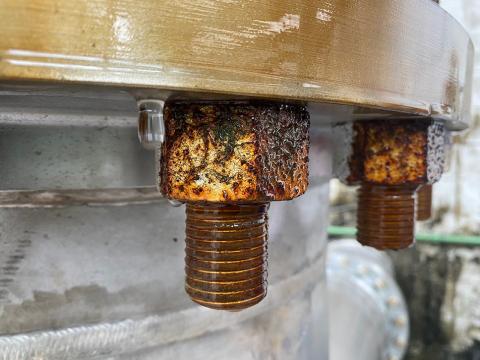The Food and Drug Administration and food processors continue to battle the threat of Listeria monocytogenes. Infections of Listeria monocytogenes (LM) are particularly dangerous for pregnant women, the elderly, and individuals who may have compromised immune systems.
At Crisis24, we have worked with many companies to address their environmental monitoring and sanitation strategies with the goal of eliminating LM from Zone 1, food contact surfaces; Zone 2 areas, which are areas in close proximity to food contact surfaces; and control of the pathogen in Zones 3 and 4.
Typical approaches to dealing with LM positive environmental sampling results are to review the movement of people and equipment from higher risk areas, such as those in Zone 4 areas, to Zone 3. Then, strategies are developed to reduce the potential for movement to Zone 2 areas. Once the prevalence of LM in Zone 2 increases, the probability of contamination of Zone 1 food contact surfaces increases.
The challenge of eliminating LM from the Zone 3 and 2 areas of food production facilities usually focuses on dealing with controlling equipment and people movement, sanitation, and elimination of harborage areas. These efforts require well-designed environmental monitoring and sanitation plans.
However, we have found that despite our collective best efforts to reduce the presence and the movement of Listeria monocytogenes in the facilities through the elimination of harborages, improving cleaning, and sanitation, positive environment samples continue to be a problem in Zones 3 and 2.
We believe we have identified two missing links in our prevention efforts:
- Anecdotal information indicates some LM in production facilities is not being controlled by typical use of Quaternary Ammonia compounds. Research indicating the potential for LM strains to be resistant to these agents supports this observation.
- The second missing link is that LM has a critical need for Iron to grow.
We have found, without exception, that facilities failing to eliminate LM from production areas have one thing in common - they all have rusting equipment and fasteners in the areas where environmental positives continue to be identified. It is all too apparent that the installation of corrosion-resistant equipment is often accomplished with Iron fasteners that almost immediately begin corroding, providing Iron to support the growth of LM.

Crisis24 is advising clients to eliminate Iron fasters from the production environment as they are supporting the growth of LM. We believe that environmental monitoring to identify harborage areas, control of equipment and people movement in facilities, proper cleaning and sanitizing, plus removal of rusting Iron will significantly reduce the risk of LM. This comprehensive approach will help eliminate LM in Zones 1 and 2 and contribute to significant reductions in Zones 3 and 4. We also recommend that firms consider adding different agents for the control of LM as there may be emerging resistance to Quaternary Ammonia in some situations.
For more information on how Crisis24 can support your efforts in contamination prevention check out our consulting services.
Author(s)

Dr. Gary Weber
Senior Director, Food Safety and Contamination Prevention
Gary Weber is a U.S.-based Director of Food Safety and Contamination Prevention responsible for food production risk analysis and design of prevention measures. He joined Crisis24 in 2019, and holds...
Learn More


